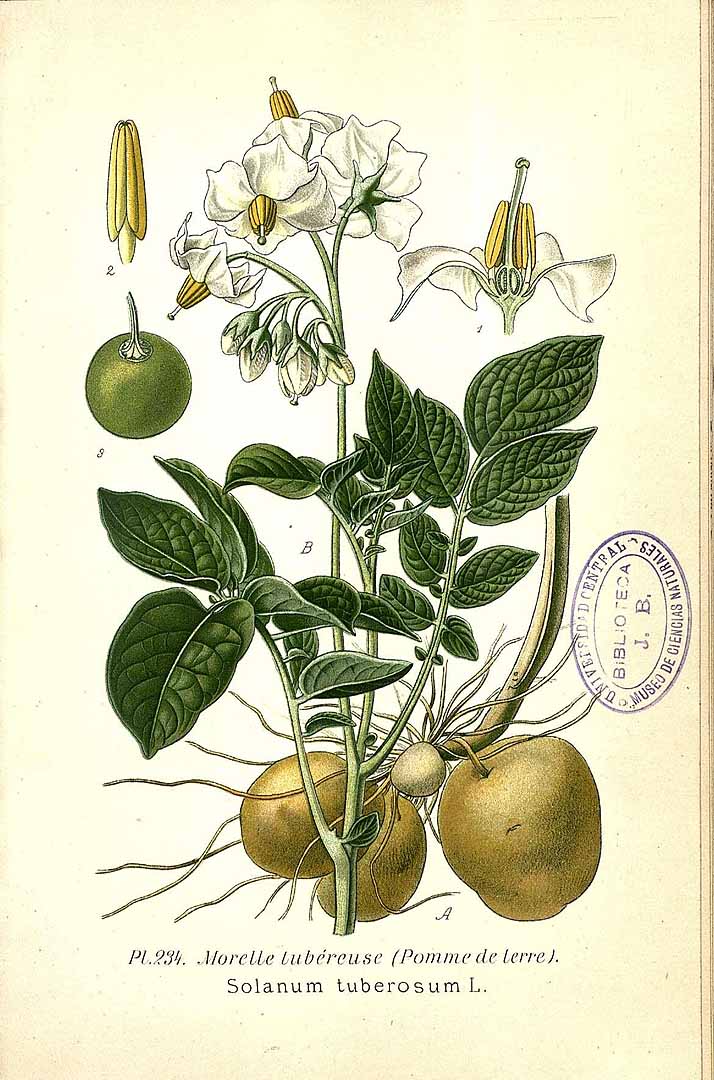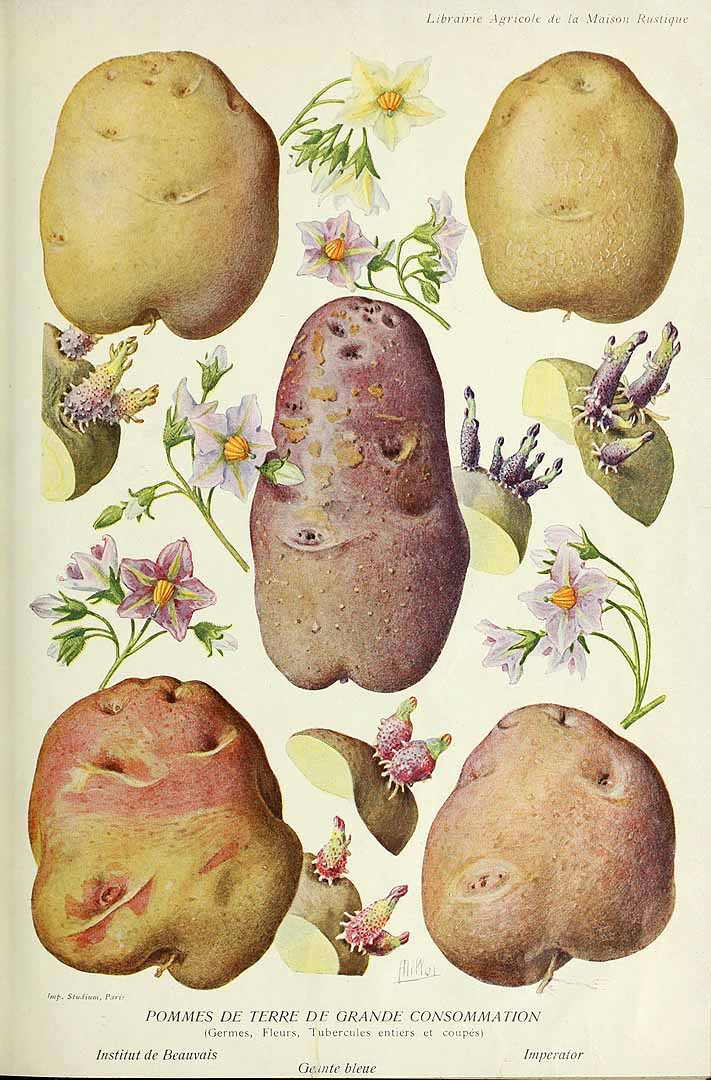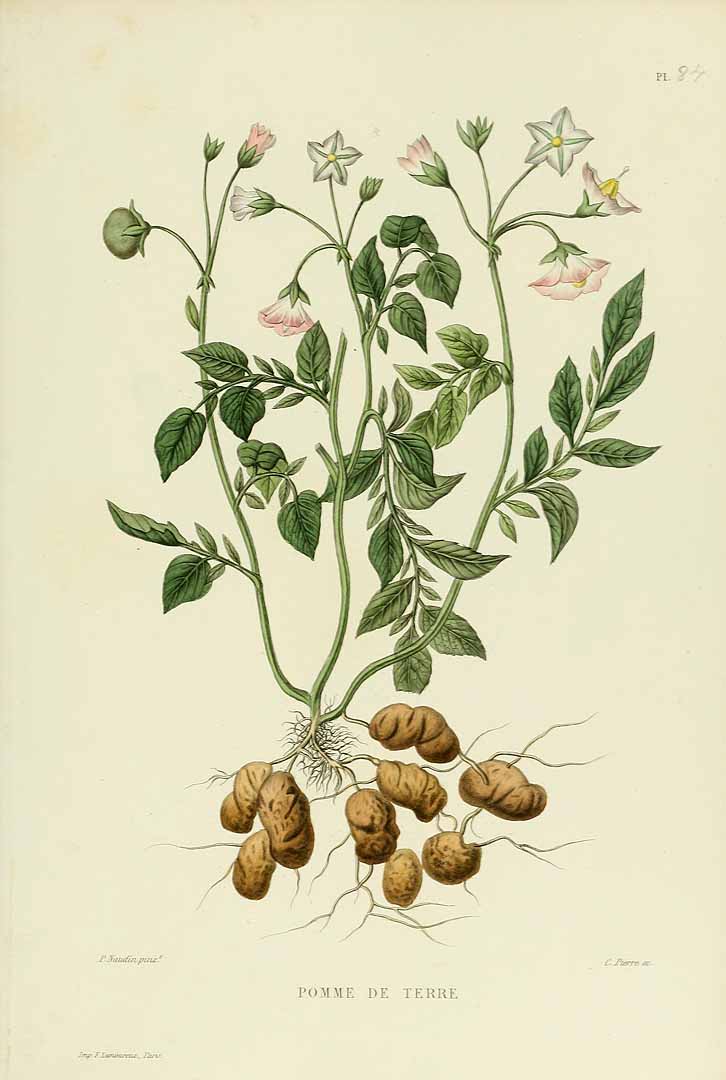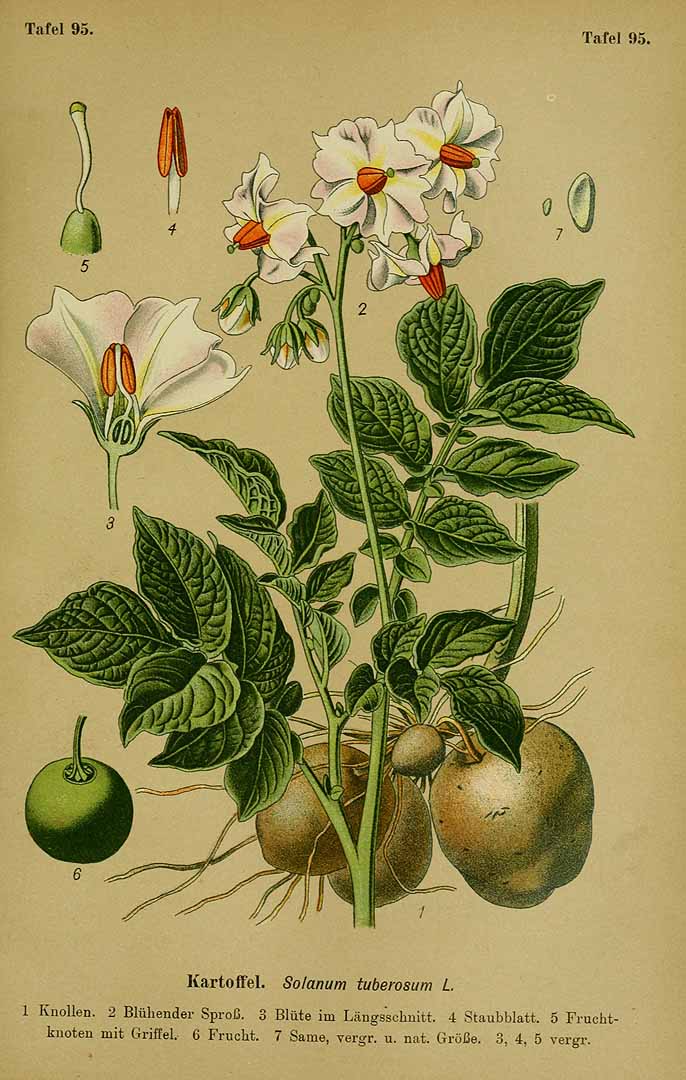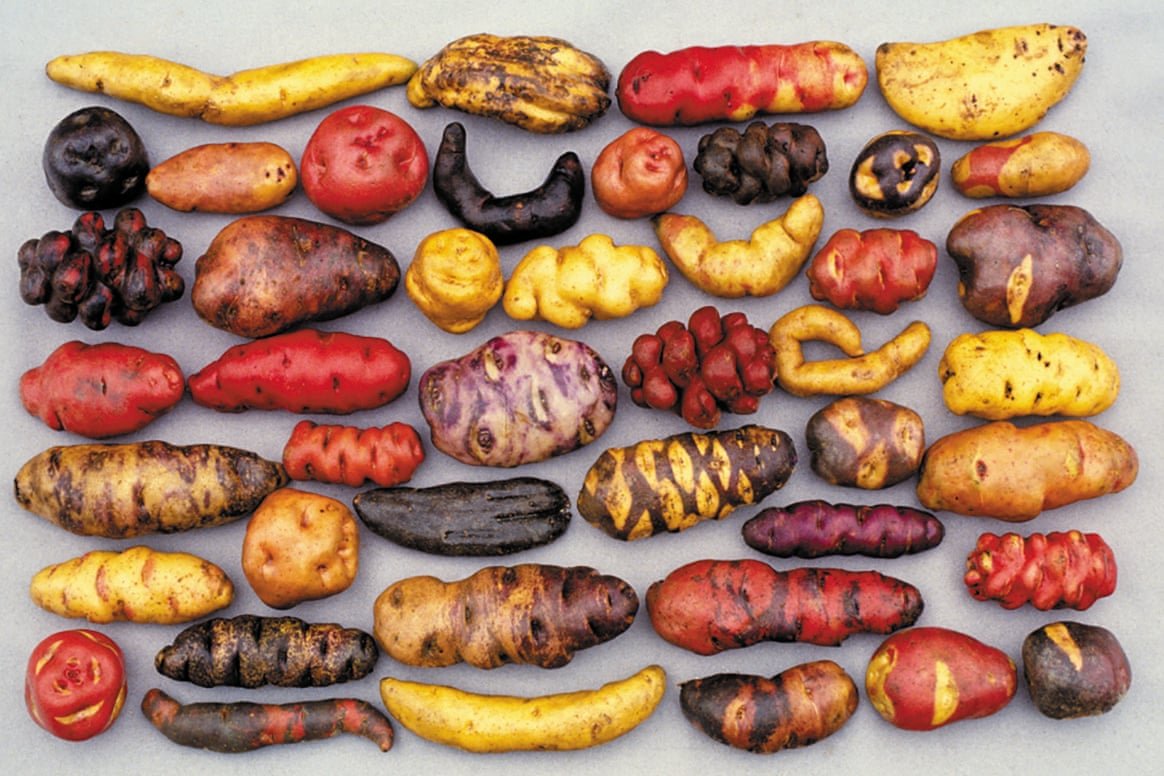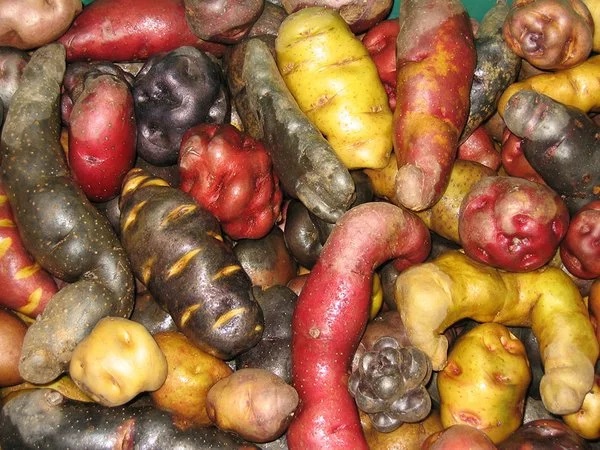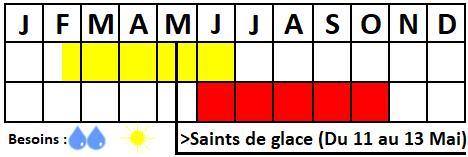! Nouveau site ici !
Vita > Plantae > Magnoliophyta > Magnoliopsida > Solanales >
Solanaceae > Solanum
Solanum tuberosum
(Pomme de terre)
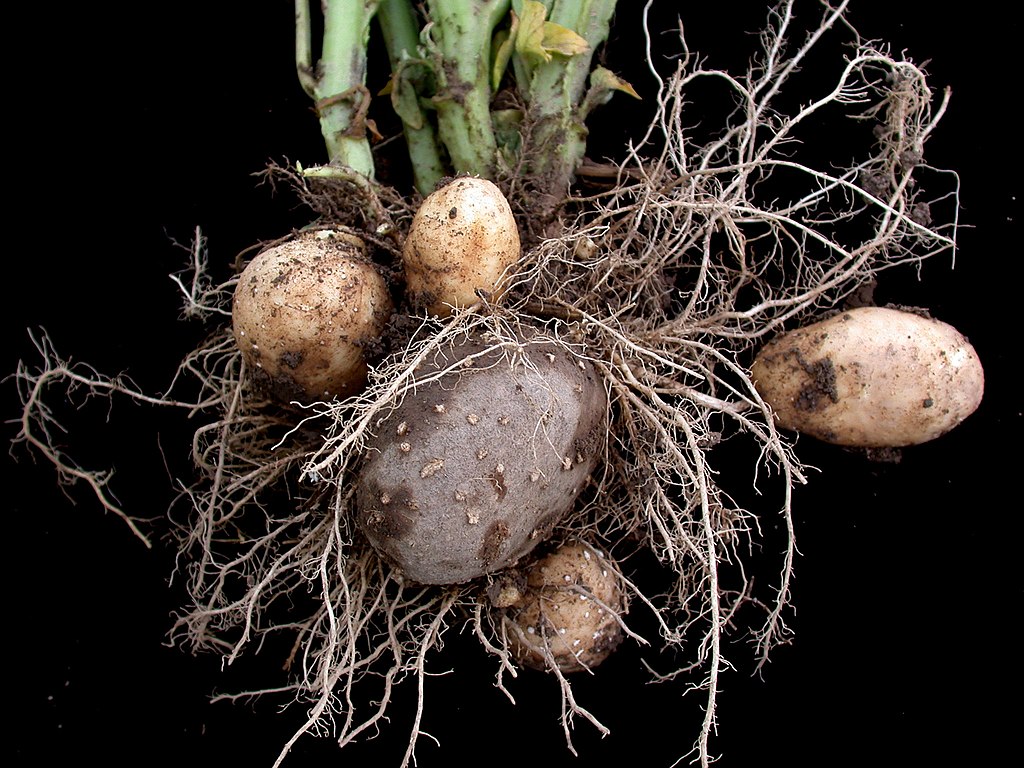
 | *****
| *****
Vita > Plantae > Magnoliophyta > Magnoliopsida > Solanales >
Solanaceae > Solanum
Solanum tuberosum
(Pomme de terre)

-5/-10°C (-2°C pour le feuillage)
Plante potagère pérenne cultivée pour ses tubercules ; elle est originaire de la cordillère des Andes (Pérou), à l'Ouest de lAmérique du Sud où son utilisation remonte à environ 8 000 ans.
⬀
Le  donne accès au menu
donne accès au menu (c'est votre point de repère) 😊 ;
En dessous vous avez la classification, à partir de la vie (Vita, premier rang) jusqu'à la classe au dessus de la plante, dont vous trouvez ensuite le nom scientifique/botanique (latin) puis le nom commun (français), le cas échéant ;
C'est aussi un lien vers la fiche complète (tout comme la ✖, en bas à droite, et le +, en dessous de la description) ;
Vient alors l'illustration (ou ce qui la remplace, en attendant), la comestibilité :
Et en bas
⬂

